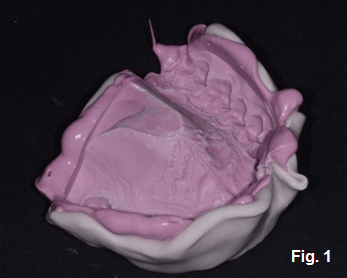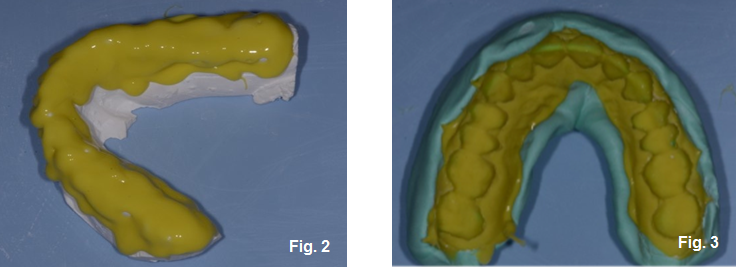Three Easy Ways to Duplicate Models

In a previous article, I discussed how to segment a wax-up; in that article, I discussed duplicating models. This prompted the curiosity of how I like to duplicate models. As I alluded to in the previous article, my general preference is to have my lab do the duplication for me – especially when dealing with a diagnostic wax-up. This way if the wax-up is broken in the process, they can fix it prior to sending it back to me. That being said, there are still plenty of times when it is way more efficient for us to be able to duplicate models in our office. In this article, I will discuss three ways to do this.
Three Methods to Duplicate Models

First up is my favorite way to duplicate models. I learned this from my lab technician and it is how he duplicates the wax-ups. This method uses PVS impression material to take an impression of the model. My lab technician likes to do this by first loosely placing lab putty over the model to be duplicated, then he uses that shell as an impression tray and the result is what you see in the main photo. (Fig. 1) I have also found that reversing order works well, too. In this case, of course, you would first dispense the light body material and dispense it over the model as you see in the second image. (Fig. 2) After this has set, simply press heavy body material – I actually like to use lab putty – over the light body material and let that set. Once it sets, carefully tease the material off your model and you will have what you see in the third image. (Fig. 3)
Both versions of this method to duplicate models have their own advantages and disadvantages. Using the putty first to form a flexible tray can allow you to use more light body material and thus potentially have less change of breaking something like a wax-up. On the other hand, placing the light body over the model first typically results in less volume of light body material and a more rigid impression. At the end of the day, both ways work very well to duplicate models and I would suggest trying both and seeing which way you prefer.
My next favorite method is to use 3mm mouth guard material in my Ministar which results in what you see in the fourth image. (Fig. 4)

This, in some ways, is even easier than taking a PVS impression of the model but there is a significant limitation to consider – this method will not work with a wax-up since it will melt the wax. A few other things to know is that your model needs to be pretty thick or you run the risk of breaking them when you take them out and it is still easy to fracture areas of teeth when removing the model from this thick material. You can, however, limit the risk of things breaking by using a thick model and setting it into the beads on the Ministar like you see in the fifth photo. (Fig. 5)
Doing this prevents the material from being pressed over the entire model thus making it easier to remove. Yet another method is to take an alginate impression of the model you want to duplicate. The best thing about this method is that just like the PVS method above, you most likely have everything you need to do this in your office – you just need to make sure you soak the model first; otherwise the alginate will stick to the model. The other thing that is helpful is to mix the alginate up so it is a runny mix so that it flows easily and you get the maximum amount of detail. The big downside to this method over the others listed is that over time the alginate will dry out and no longer be accurate.
John R. Carson, DDS, PC, Spear Visiting Faculty and Contributing Author www.johncarsondds.com
FOUNDATIONS MEMBERSHIP
New Dentist?
This Program Is Just for You!
Spear’s Foundations membership is specifically for dentists in their first 0–5 years of practice. For less than you charge for one crown, get a full year of training that applies to your daily work, including guidance from trusted faculty and support from a community of peers — all for only $599 a year.

By: John Carson
Date: January 5, 2015
Featured Digest articles
Insights and advice from Spear Faculty and industry experts


